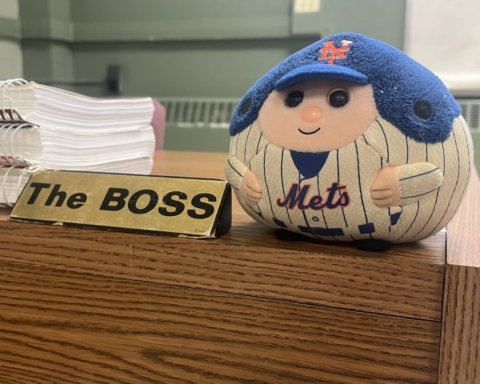By Bianca Billoni
As we say goodbye to the mostly sunny weeks of summer and welcome the brisk, cloudy days of fall, many people begin to experience the symptoms of seasonal affective disorder (SAD). More commonly known as seasonal depression, this condition affects between 0.5 and 2.4 percent of the U.S. population, according to a 2020 study published in the American Family Physician. Symptoms can include difficulty sleeping, lack of interest in social activities, changes in eating habits, agitation and more.
College students can be hit especially hard by SAD because of the already heavy load on their plates. Most students have to juggle classes, jobs, extracurricular activities, and sports along with making time for friends, family, and themselves. The added pressure of depression is no easy thing to manage.
For me, the loss of regular sunshine can put a damper on my day-to-day routine. I look forward to putting together cute outfits and walking to class on those nice days, but as the temperature decreases and the sunshine disappears, I tend to lose some of that motivation. First, I won’t be smiling as much, then I’ll be wearing sweatshirts and leggings four out of five days a week, and then I’m debating missing out on a class or two because of the weather. All these things and more can play into SAD.
One of the most difficult aspects of college life is finding time to deal with mental health among the many responsibilities in one’s schedule. When professors and coaches expect full attention and effort at every moment, this can be stressful. Taking a day or two off for mental health reasons hasn’t been fully normalized either, so it can be intimidating to communicate these struggles to a superior.
Colleges and universities need to have more open conversations about the unique mental health issues college students face, especially at the changing of the seasons from summer to fall and winter. It doesn’t help that classes tend to get more intense at this time. More than just communicating these ideas to students, having faculty and staff go through training could be very beneficial. This way, students can feel more comfortable bringing up such issues in the classroom.
I know these are not changes that can be made overnight, but small things can be integrated over time. One of my professors offers two or three excused absences for all her courses. You don’t have to send an email or ask about missing class, you can simply not come on that day, and then you can continue as normal moving forward. The value of this is that students who might feel too nervous to talk about their mental health struggles with a professor can still take a day for themselves without having that personal conversation.
Although receiving accommodations and leeway can be helpful, there are still things we can do for ourselves to combat the fall and winter blues. It can be as simple as making sure we’re eating enough throughout the day, drinking enough water, and getting enough sleep. Scheduling personal time can be essential as well. Even if it’s exam time and you have many other commitments to attend to, take just 30 minutes to watch an episode of a show, scroll through social media, take a nap or go for a walk. These little things can make all the difference when struggling with this condition.
billonbd19@bonaventure.edu






